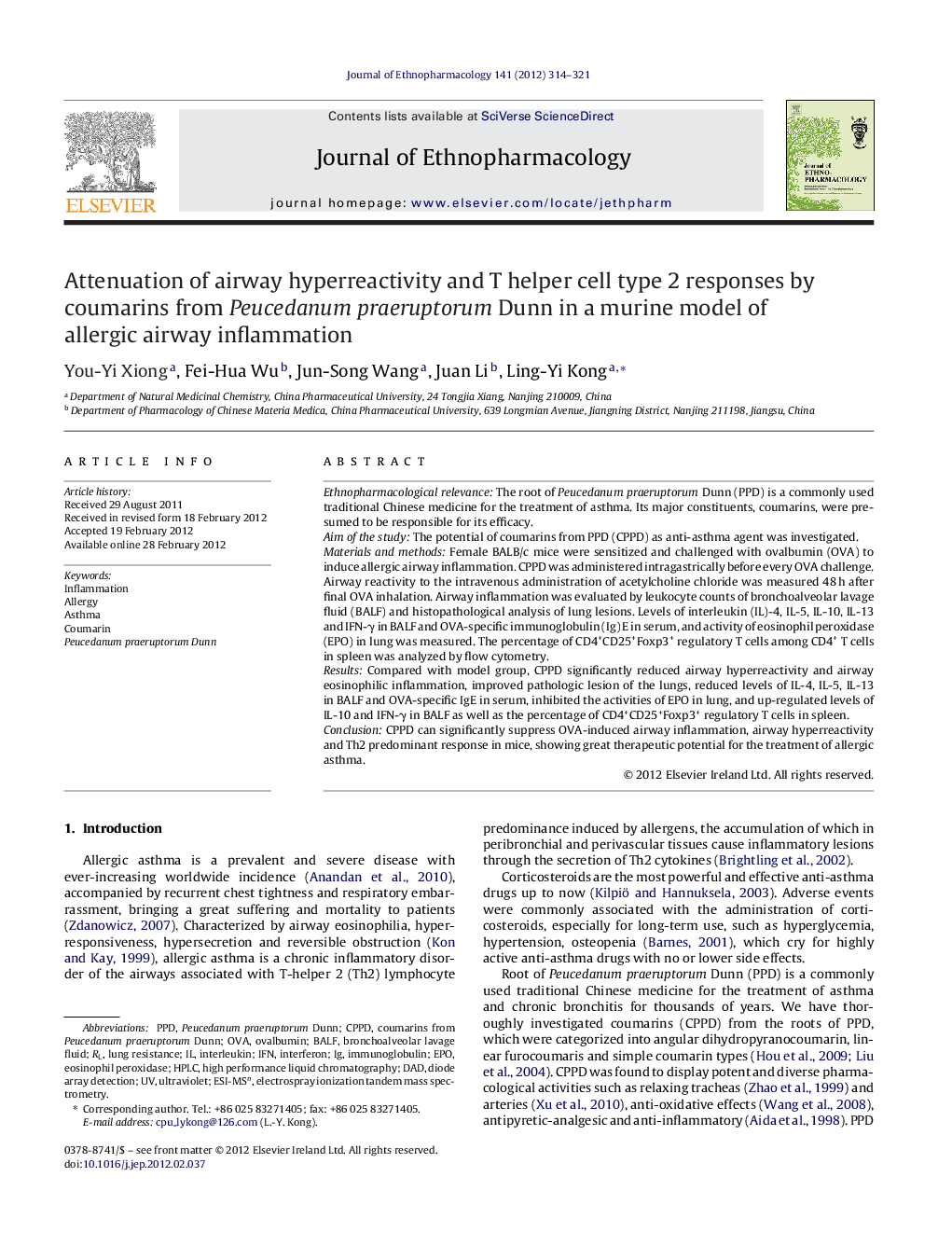| Article ID | Journal | Published Year | Pages | File Type |
|---|---|---|---|---|
| 5838229 | Journal of Ethnopharmacology | 2012 | 8 Pages |
Abstract
Ethnopharmacological relevanceThe root of Peucedanum praeruptorum Dunn (PPD) is a commonly used traditional Chinese medicine for the treatment of asthma. Its major constituents, coumarins, were presumed to be responsible for its efficacy.Aim of the studyThe potential of coumarins from PPD (CPPD) as anti-asthma agent was investigated.Materials and methodsFemale BALB/c mice were sensitized and challenged with ovalbumin (OVA) to induce allergic airway inflammation. CPPD was administered intragastrically before every OVA challenge. Airway reactivity to the intravenous administration of acetylcholine chloride was measured 48 h after final OVA inhalation. Airway inflammation was evaluated by leukocyte counts of bronchoalveolar lavage fluid (BALF) and histopathological analysis of lung lesions. Levels of interleukin (IL)-4, IL-5, IL-10, IL-13 and IFN-γ in BALF and OVA-specific immunoglobulin (Ig) E in serum, and activity of eosinophil peroxidase (EPO) in lung was measured. The percentage of CD4+CD25+Foxp3+ regulatory T cells among CD4+ T cells in spleen was analyzed by flow cytometry.ResultsCompared with model group, CPPD significantly reduced airway hyperreactivity and airway eosinophilic inflammation, improved pathologic lesion of the lungs, reduced levels of IL-4, IL-5, IL-13 in BALF and OVA-specific IgE in serum, inhibited the activities of EPO in lung, and up-regulated levels of IL-10 and IFN-γ in BALF as well as the percentage of CD4+CD25+Foxp3+ regulatory T cells in spleen.ConclusionCPPD can significantly suppress OVA-induced airway inflammation, airway hyperreactivity and Th2 predominant response in mice, showing great therapeutic potential for the treatment of allergic asthma.
Keywords
ESI-MSnPPDOVADADEPOCPPDPeucedanum praeruptorum DunnAsthmaAllergyeosinophil peroxidaseUltravioletinflammationOvalbuminimmunoglobulin interferonIFNinterleukinBALFdiode array detectionElectrospray ionization tandem mass spectrometryBronchoalveolar lavage fluidLung resistancehigh performance liquid chromatographyHPLCCoumarin
Related Topics
Health Sciences
Pharmacology, Toxicology and Pharmaceutical Science
Pharmacology
Authors
You-Yi Xiong, Fei-Hua Wu, Jun-Song Wang, Juan Li, Ling-Yi Kong,
